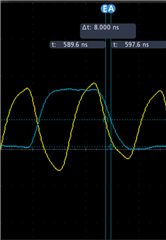Other Parts Discussed in Thread: AM26LV31, AM26C31
Hi,
Quick question related to AM26LS31CDBR part, Is there a possibility of difference in the channel to channel propagation delay ?
Should we assume it is going to be same for both channels 7ns?
Clarification required in the following scenerio :
In the following schematic image :
- RS422 driver part # AM26LS31CDBR (New Transmitter board)
- Driver is connected to receiver input section with 12 feet LAN cable
- HCPL-2430-300E opto coupler is used on the receiving side (Legacy receiver design)
Presently we do not have an option to modify our legacy receiver designs.
Am reaching out to understand scenerio's like if i have differential transmitter to differential receiver type design, typically a ground reference might be needed between both transceivers.
While in the above case, on one side we have RS422 Transceiver, while on the receiving side it is being received with an opto coupler, am worried about the consistency to meet the CRC checks.
Reasons : 1.) SPI clock being used is 10Mhz, the opto coupler has propagation delay of 35ns typical value(under 50 Centigrade)
2.) if there is no ground reference between Transmitter to Receiver end, is there a possibility of mis interpretation on the receiver end due to differences in the differential voltage?
One of the reasons to reach out is, As we are using AM26LS31CDBR on the transmitter side, Is this going to be an issue reliability point of view about the consistency(prone for CRC errors) due to above reasons?
Appreciate your inputs and feedback.



